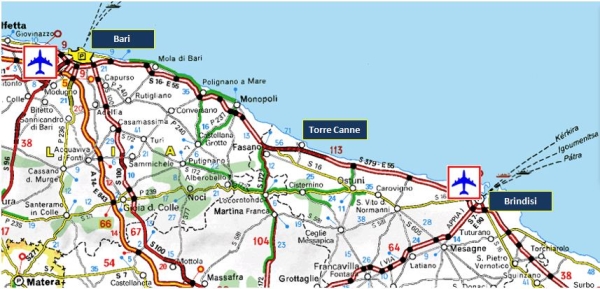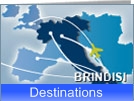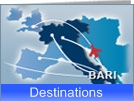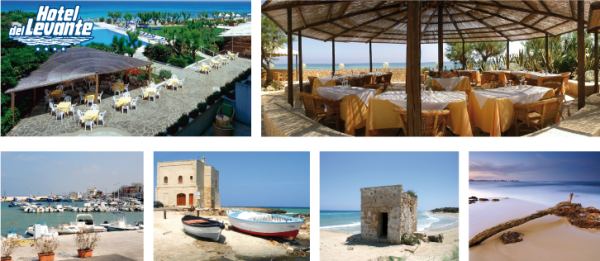Call for Papers
Keynote speakers
John Bacus (Google SketchUp) and Fabio Casati (University of Trento, Italy)
Important dates
Paper (long and short)Complete paper submission: January 5, 2011
Decision notification: February 28, 2011
Camera-ready due: March 14, 2011
Doctoral consortium
Submissions: January 15, 2011 - extended -
Decision notification: February 28, 2011
Camera-ready due: March 14, 2011
Workshops
Proposals: January 26, 2011
Decision notification: February 9, 2011
Theme
End-User Development (EUD) offers lightweight, use-time support which allows end users to configure, adapt and evolve software themselves. As organizations and work practices vary widely and evolve rapidly, the technological infrastructure has to permit and even support these changes. Traditional Software Engineering approaches reach their limits whenever the full spectrum of user requirements cannot be anticipated or the frequency of changes cannot be accommodated by traditional processes. EUD refers to a set of methods, techniques, and tools that allow users acting as non-professional software developers to create, modify or extend a software artifact.
The deployment of Web 2.0 technologies resulted in the exponential growth of the number of end-user developers compared to the number of software professionals. The increasing importance of ‘infrastructural’ aspects of software, particularly the mutual dependencies between technologies, usages, and domain competencies, calls for a differentiation of roles beyond the classical user-designer dichotomy.
The International Symposium on EUD brings together researchers and practitioners from industry and academia working in the field of EUD. While programming activities by non-professional actors are an essential focus, EUD also investigates into related activities within the process of developing a software infrastructure, e.g. the collective understanding and sense-making of use problems and solution alternatives, the interactions among end users around new configurations, and delegation patterns that may also partly involve professional designers. To this end, EUD brings together threads of discussion from disciplines like Human-Computer Interaction, Software Engineering, Computer Supported Cooperative Work, Artificial Intelligence. Concepts such as configurability, tailorability, end-user programming, visual programming, natural programming, and programming by example already form a fruitful base, but need to be better integrated to exploit the synergy among them.
Scope and Topics
Authors are invited to submit manuscripts of original unpublished
work in all areas related to EUD. Long papers may address work on
cognitive and design aspects, underlying theories, formal methods,
taxonomies, implementation efforts, tool support, and empirical studies.
Short papers that present work in progress or demonstrations of tools
are also solicited.
Areas of interest include, but are not limited to:
- Requirements for EUD
- User Interfaces for EUD
- EUD for specific types of devices
- EUD in specific fields of application
- EUD for user groups with specific needs
- Architectures for EUD
- Metaphors and patterns for software modularization supporting EUD
- Deployment of Web 2.0 technologies, Mash-ups
- Empirical studies of EUD practices
- EUD as part of software infrastructure development and evolution
- Support for collaboration among non-professional programmers
- Cooperation between EUD and professional software developers
- EUD and Open Source
- Educational concepts to foster EUD
- Micro-economical effects of EUD
- Macro-economical impact of EUD
- Business models for EUD solutions
- Political implications of EUD
- Cultures of Participation and Meta-design
Paper submission
Two different types of paper submissions are invited:
- long papers, up to sixteen pages, reporting on research or experience;
- short papers, up to six pages, describing work in progress or tool demonstrations.
Paper submission deadline is January 5, 2011. Paper title, abstract and keywords, as well as addressed conference topics, are required to aid in reviewer assignments. Authors may submit and update them through the EasyChair system until paper submission deadline. Papers must be carefully formatted in Springer LNCS format. Both abstracts and papers must be submitted online through the EasyChair system. All submissions will be reviewed by members of the international Program Committee. Accepted papers (both long and short) will appear in the proceedings of IS-EUD 2011, published by Springer as Lecture Notes on Computer Science (LNCS). Short papers will be presented at the conference as poster or live demo in a specific session.
Workshops
Workshops complement the scientific program. They provide an informal setting
where participants have the opportunity to discuss specific topics in an
atmosphere that fosters the active exchange of ideas in the area of EUD.
Workshops will be held on June 7, 2011.
Workshop proposals should be sent to the Workshop Co-Chairs
Anne Marie Kanstrup
and Anders Mørch by January 26, 2011. The acceptance notification will be sent by February 9, 2011.
Doctoral Consortium
The IS-EUD Doctoral Consortium is intended to bring together PhD students
working on theory and application of EUD. To provide fruitful feedback and advice to the selected Ph.D.
students on their research thesis. We particularly encourage students that are somewhere in the middle of their
research to submit to this workshop.
Applications to the Doctoral Consortium (up to 4 pages) should
be sent to the Doctoral Consortium Co-Chairs
Daniela Fogli and
Elisa Giaccardi by January 5, 2011. The acceptance
notification will be sent by February 28, 2011.
Venue
The Symposium will take place at the Hotel del Levante, Torre Canne (Brindisi),
a seaside resort located on the lovely Adriatic Coast of the Apulia region, in
South-East Italy.
Hotel del Levante, via Appia, 22, Torre Canne (Brindisi), Italy
Tel. +39 080 4820 160 - Fax +39 080 4820 096
Torre Canne is at about 40 Km from Brindisi airport and about 75 Km from Bari airport. Both airports have several daily connections with Rome and Milan, and with many other cities in Italy and Europe.
Symposium Organizers
Conference Chairs
Maria Francesca Costabile
University of Bari, Italy
Gerhard Fischer
University of Colorado, USA
Program Chairs
Yvonne Dittrich
University of Copenhagen, Denmark
Antonio Piccinno
University of Bari, Italy
Workshop Chairs
Anne-Marie Kanstrup
University of Aalborg, Denmark
Anders Mørch
University of Oslo, Norway
Doctoral Consortium Chairs
Daniela Fogli
University of Brescia, Italy
Elisa Giaccardi
Carlos III University of Madrid, Spain
Publicity Chairs
Paolo Buono
University of Bari, Italy
Rosa Lanzilotti
University of Bari, Italy
Local arrangement Chair
Carmelo Ardito
University of Bari, Italy
Steering Committee
Boris de Ruyter
Philips Research, The Netherlands
Volkmar Pipek
University of Siegen, Germany
Mary Beth Rosson
Pennsylvania State University, USA
Volker Wulf
University of Siegen, Germany
Program Committee
Michael Atwood, Drexel University, USA
John Bacus, Google Inc., USA
Jörg Beringer, SAP Research, Germany
Paolo Bottoni, Sapienza-University of Rome, Italy
Margaret Burnett, Oregon State University, USA
Danilo Caivano, University of Bari, Italy
John Carroll, The Pennsylvania State University, USA
Ellen Christiansen, Ålborg University, Denmark
Vincenzo D'Andrea, University of Trento, Italy
Clarisse de Souza, PUC-Rio, Brasil
Cleidson de Souza, IBM Brazil, Brasil
Paloma Diaz Perez, Carlos III University of Madrid, Spain
Jeanette Eriksson, BTH, Sweden
Athula Ginige, University of Western Sydney, Australia
Thomas Andreas Herrmann, Ruhr-University of Bochum, Germany
Heinrich Hussmann, University of Munich, Germany
Kari Kuutti, University of Oulu, Finland
Catherine Letondal, ENAC/LII, France
Henry Lieberman, MIT, USA
Gary Mardsen, University of Cape Town, South Africa
Agostino Marengo, University of Bari, Italy
Nikolay Mehandjiev, University of Manchester, UK
Sebastian S. Ortiz-Chamorro, National University of La Plata, Argentina
Sharon Oviatt, Incaa Designs, USA
Philippe Palanque, Paul Sabatier University, France
Cecile Paris, CSIRO ICT Centre, Australia
Nandish Patel, Brunel, UK
Fabio Paternò, CNR, Italy
Samuli Pekkola, Tampere Technical University, Finland
David Redmiles, University of California, USA
Alexander Repenning, University of Colorado, USA
Michael Resnick, MIT, USA
Stefan Sauer, University of Paderborn, Germany
Judith Segal, The Open University, UK
Helen Sharp, The Open University, UK
Carla Simone, University of Milano-Bicocca, Italy
John C. Thomas, IBM T. J. Watson Research, USA
Genoveffa Tortora, University of Salerno, Italy
Mike Twidale, University of Illinois, USA
Corrado Aaron Visaggio, University of Sannio, Italy
Jacob Winther, Microsoft Dynamics, Denmark
Yunwen Ye, Software Research Associates Inc., Japan
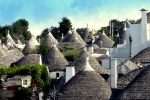


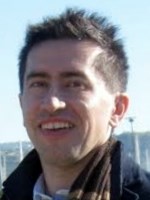
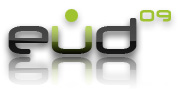

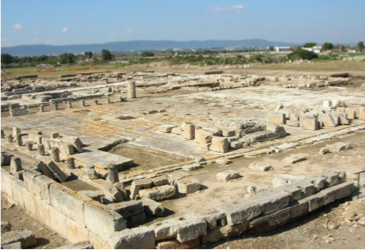 Gnatia (also Egnatia or Ignatia in Greek) was an ancient city of the Messapi, and their frontier town towards the Salentini. It is located near the modern Fasano.
Gnatia (also Egnatia or Ignatia in Greek) was an ancient city of the Messapi, and their frontier town towards the Salentini. It is located near the modern Fasano.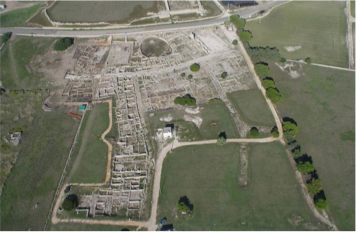 Under the Romans, it was of importance for its trade, lying as it did on the sea, at the point where the Via Traiana joined the coast road, 50 km south-east of Bari.
Under the Romans, it was of importance for its trade, lying as it did on the sea, at the point where the Via Traiana joined the coast road, 50 km south-east of Bari.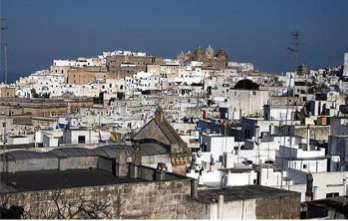 The municipal territory of Cisternino is south-west oriented over the splendid Itria Valley, known for the considerable presence of trulli, the local typical stone constructions.
The municipal territory of Cisternino is south-west oriented over the splendid Itria Valley, known for the considerable presence of trulli, the local typical stone constructions.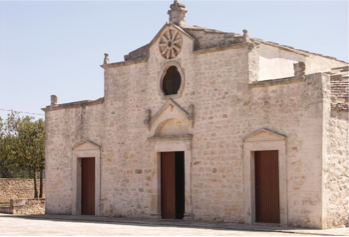 A very picturesque local event is the Easter Monday’s feast, here called "A Pasquaredde", when the local population goes to the Sanctuary of the Madonna of Ibernia (Madonna de Bernis) with a bag-shaped cake containing two hard-boiled eggs for the boys and a dolly-shaped cake with one hard-boiled egg in the belly for the girls. This particular cake, called “u chrruchl", is meant to ensure fertility. The Sanctuary is also an interesting archaeological site where Roman and Medieval findings may be observed. Finally, the Norman-Swabian Tower or Torre di Porta Grande, is a considerable example of access way to the town.
A very picturesque local event is the Easter Monday’s feast, here called "A Pasquaredde", when the local population goes to the Sanctuary of the Madonna of Ibernia (Madonna de Bernis) with a bag-shaped cake containing two hard-boiled eggs for the boys and a dolly-shaped cake with one hard-boiled egg in the belly for the girls. This particular cake, called “u chrruchl", is meant to ensure fertility. The Sanctuary is also an interesting archaeological site where Roman and Medieval findings may be observed. Finally, the Norman-Swabian Tower or Torre di Porta Grande, is a considerable example of access way to the town.
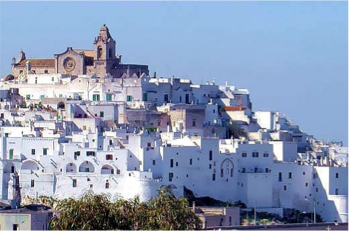 An important cultural centre in Salento, Ostuni is also known as the “white city” and it is located eight kilometers from the Adriatic coast, in the southern Murgia. The first settlement dates back to the 4th century B.C. and was established by the Messapi. Destroyed at the end of the Second Punic War, the town was rebuilt by the Romans under whom Ostuni flourished. A long period of alternating domination characterized the fall of the Roman Empire: the Ostrogoths, Longobards, Normans, Suevians, Angionians and Aragons followed one after another, but none managed to subject the town to feudal rule. After 1800 Ostuni
An important cultural centre in Salento, Ostuni is also known as the “white city” and it is located eight kilometers from the Adriatic coast, in the southern Murgia. The first settlement dates back to the 4th century B.C. and was established by the Messapi. Destroyed at the end of the Second Punic War, the town was rebuilt by the Romans under whom Ostuni flourished. A long period of alternating domination characterized the fall of the Roman Empire: the Ostrogoths, Longobards, Normans, Suevians, Angionians and Aragons followed one after another, but none managed to subject the town to feudal rule. After 1800 Ostuni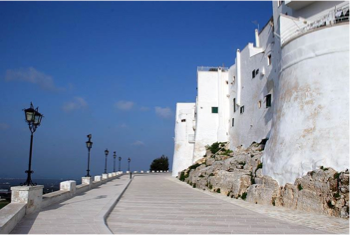 Ostuni’s charm lies in the characteristic white walls of the houses in the old town. Indeed all the houses in the historic centre are only painted using white lime paint. Due to this feature Ostuni is called "the white town", “the queen of the olive groves" and the "city of the crib". The entire old town, known as the “Terra” to distinguish it from the more recent "Marina", is worth a visit. The centre of the old town is crowned by Ostuni Cathedral, in a style difficult to classify, which is however traceable to the Gothic-Romanesque tradition, with Apulia hosting other examples of this architecture. Check out the large door of the Church of Spirito Santo which dates back to 1450 and was originally built for the Church of Ognissanti. It is today recognized as a national monument. Another attraction in Ostuni is the 17-km long coastline that alternates sandy little bays, rocks, pebble beaches and dunes covered in Mediterranean maquis. A huge attraction is the Festival of Sant’Oronzo, the patron saint of the town, which takes place from the 25th to the 27th of August and which also includes the “Cavalcata” in which the municipality authorities and representatives from the clergy parade on horseback alongside of dames and knights in medieval costumes.
Ostuni’s charm lies in the characteristic white walls of the houses in the old town. Indeed all the houses in the historic centre are only painted using white lime paint. Due to this feature Ostuni is called "the white town", “the queen of the olive groves" and the "city of the crib". The entire old town, known as the “Terra” to distinguish it from the more recent "Marina", is worth a visit. The centre of the old town is crowned by Ostuni Cathedral, in a style difficult to classify, which is however traceable to the Gothic-Romanesque tradition, with Apulia hosting other examples of this architecture. Check out the large door of the Church of Spirito Santo which dates back to 1450 and was originally built for the Church of Ognissanti. It is today recognized as a national monument. Another attraction in Ostuni is the 17-km long coastline that alternates sandy little bays, rocks, pebble beaches and dunes covered in Mediterranean maquis. A huge attraction is the Festival of Sant’Oronzo, the patron saint of the town, which takes place from the 25th to the 27th of August and which also includes the “Cavalcata” in which the municipality authorities and representatives from the clergy parade on horseback alongside of dames and knights in medieval costumes.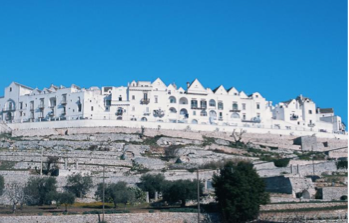 This town rises at the junction of three provinces: Bari, Taranto and Brindisi. It is placed in the Itria Valley, on a tableland 410m above sea level at the south-eastern side of Murge dei Trulli. Locorotondo was probably founded by Greek settlers several centuries before Christ. Early sources mentioning a feud named Rotondo date back to the 12th century. Around 1250, this village gradually grew and became a real hamlet subject to St. Stephen monastery. Between the 14th and 15th century, Locorotondo was a property of one of the greatest families of that era, Del Balzo Orsini. During the 16th century the town experienced an economic,
This town rises at the junction of three provinces: Bari, Taranto and Brindisi. It is placed in the Itria Valley, on a tableland 410m above sea level at the south-eastern side of Murge dei Trulli. Locorotondo was probably founded by Greek settlers several centuries before Christ. Early sources mentioning a feud named Rotondo date back to the 12th century. Around 1250, this village gradually grew and became a real hamlet subject to St. Stephen monastery. Between the 14th and 15th century, Locorotondo was a property of one of the greatest families of that era, Del Balzo Orsini. During the 16th century the town experienced an economic,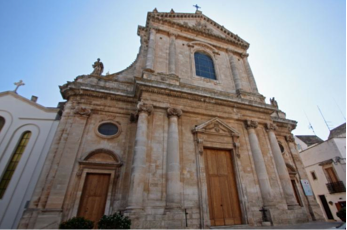 The Mother church is devoted to St. George and dates back to 17th century. It was built following the destruction of two previous places of worship. The dome was covered with a polychromatic glazed terracotta until 1841, when it was destroyed by a lightning and it was never fixed. Locorotondo has several churches, among which the church of Addolorata, the church of Holy Spirit, St. Nicholas, Annunziata, St. Rocco, Madonna della Catena. Inside the beautiful church of S. Maria della Greca, you can admire a valuable Renaissance polyptyc over the middle altar in memory of the Virgin of Roses as well as a sculptural set portraying St. George riding a horse. During the celebrations for St. Rocco, at midnight on the 16th of August, a very evocative firework competition takes place. Four competing companies usually take part in the event and the winning one repeats its pyrotechnic show at the end of the celebrations, the following night.
The Mother church is devoted to St. George and dates back to 17th century. It was built following the destruction of two previous places of worship. The dome was covered with a polychromatic glazed terracotta until 1841, when it was destroyed by a lightning and it was never fixed. Locorotondo has several churches, among which the church of Addolorata, the church of Holy Spirit, St. Nicholas, Annunziata, St. Rocco, Madonna della Catena. Inside the beautiful church of S. Maria della Greca, you can admire a valuable Renaissance polyptyc over the middle altar in memory of the Virgin of Roses as well as a sculptural set portraying St. George riding a horse. During the celebrations for St. Rocco, at midnight on the 16th of August, a very evocative firework competition takes place. Four competing companies usually take part in the event and the winning one repeats its pyrotechnic show at the end of the celebrations, the following night.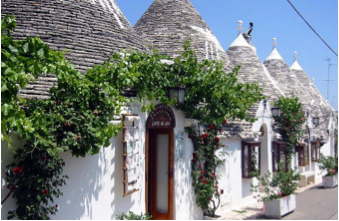 Alberobello is renowned for the iconic Trulli, a traditional stone building, invented in the 15th century to avoid paying taxes to the King. The Trulli, with their distinctive cone-shaped roof, are unique to the Itria valley in Italy and were built using no mortar.
In Alberobello you can visit Aia Piccola, a district where about 400 Trulli are concentrated. The homes are still lived in, creating a wonderful atmosphere as you wander the lanes admiring the history of the area and talking to the friendly locals.
The beautiful Basilica Minore was built in 1926 by architect Antonio Curri in a neo-classical style,
and nearby there is the Trullo Sovrano, a modern Trullo house. Built with two-stores, several fireplaces, kitchen equipment and looms, this house looks like a mansion compared to the much simpler trulli in the area.
Alberobello is renowned for the iconic Trulli, a traditional stone building, invented in the 15th century to avoid paying taxes to the King. The Trulli, with their distinctive cone-shaped roof, are unique to the Itria valley in Italy and were built using no mortar.
In Alberobello you can visit Aia Piccola, a district where about 400 Trulli are concentrated. The homes are still lived in, creating a wonderful atmosphere as you wander the lanes admiring the history of the area and talking to the friendly locals.
The beautiful Basilica Minore was built in 1926 by architect Antonio Curri in a neo-classical style,
and nearby there is the Trullo Sovrano, a modern Trullo house. Built with two-stores, several fireplaces, kitchen equipment and looms, this house looks like a mansion compared to the much simpler trulli in the area. 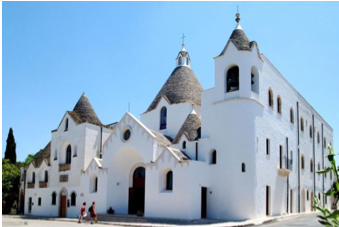
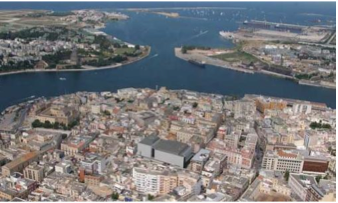 Brindisi
is in the Salento plains and on the Adriatic sea, with a natural harbour
jutting into the land and whose deer-like shape determined the name of
the town. It was once the main base of the Messapian civilization,
always conflicted with neighboring Taranto and it was conquered by the
Romans in 267 B.C. Connected to the capital of the Empire by via Appia
and via Traiana, it was an extremely important trading centre and
episcopal base from the start of the apostolic age. Brindisi shared then
the fate of all the towns in the Region and it was ruled by Byzantines,
Normans,
Brindisi
is in the Salento plains and on the Adriatic sea, with a natural harbour
jutting into the land and whose deer-like shape determined the name of
the town. It was once the main base of the Messapian civilization,
always conflicted with neighboring Taranto and it was conquered by the
Romans in 267 B.C. Connected to the capital of the Empire by via Appia
and via Traiana, it was an extremely important trading centre and
episcopal base from the start of the apostolic age. Brindisi shared then
the fate of all the towns in the Region and it was ruled by Byzantines,
Normans, An
absolute must see in Brindisi is the Aragon Castle, a “sea fort” built
in 1491 on the island facing the harbor in order to defend the town. The
Castle is divided in two parts: the “Red Castle”, made of red stone, and
the Fort, used to house the garrisons. The town‟ s second fort is the
Swabian Castle or “Large Castle”: it was built under the order of
Frederick II as a fortified residence for the garrisons. In the San
Pietro degli Schiavoni district, worth visiting is the archaeological
area with its Roman zone, including a thermal spa, houses and streets.
Nearby there are also five lime baths to filter drinkable water. Beside
San Vito Street there is the Tancredi Fountain, erected under the order
of Emperor Tancredi in 1192 to celebrate the marriage of his son Ruggero
to Irene, the daughter of the Emperor of Constantinople. Traditional
rites worth attending include the sea Procession of Patron Saints during
the first week of September, the Adorned Horse of Corpus Domini and
Osanna, a religious rite of Greek origins that has taken place ever
since the half of the 10th century.
An
absolute must see in Brindisi is the Aragon Castle, a “sea fort” built
in 1491 on the island facing the harbor in order to defend the town. The
Castle is divided in two parts: the “Red Castle”, made of red stone, and
the Fort, used to house the garrisons. The town‟ s second fort is the
Swabian Castle or “Large Castle”: it was built under the order of
Frederick II as a fortified residence for the garrisons. In the San
Pietro degli Schiavoni district, worth visiting is the archaeological
area with its Roman zone, including a thermal spa, houses and streets.
Nearby there are also five lime baths to filter drinkable water. Beside
San Vito Street there is the Tancredi Fountain, erected under the order
of Emperor Tancredi in 1192 to celebrate the marriage of his son Ruggero
to Irene, the daughter of the Emperor of Constantinople. Traditional
rites worth attending include the sea Procession of Patron Saints during
the first week of September, the Adorned Horse of Corpus Domini and
Osanna, a religious rite of Greek origins that has taken place ever
since the half of the 10th century.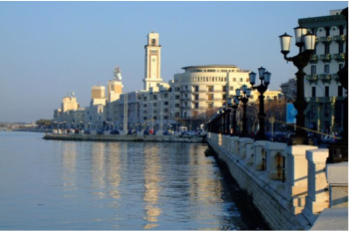 The capital town of the Region lies on the Adriatic coast. The town has the shape of a bird with open wings, whose head forms the nucleus of Bari Vecchia, the old town.Bari was annexed to the Roman Empire in the 3rd century B.C. and over the ages it was an Arab Emirate, later conquered by the Longobards, Bizantines and Saracens. Once the base of the Roman Empire’s fleet for the Orient, the urban structure of the old town is arranged around the Catapan Court.
The capital town of the Region lies on the Adriatic coast. The town has the shape of a bird with open wings, whose head forms the nucleus of Bari Vecchia, the old town.Bari was annexed to the Roman Empire in the 3rd century B.C. and over the ages it was an Arab Emirate, later conquered by the Longobards, Bizantines and Saracens. Once the base of the Roman Empire’s fleet for the Orient, the urban structure of the old town is arranged around the Catapan Court.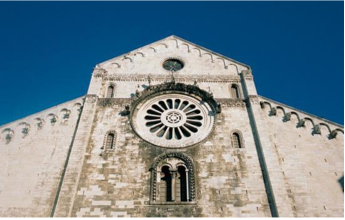 Important monuments in town include the Basilica of San Nicola, housing the remains of the patron saint, and the Norman-Swabian Castle, built under the orders of Frederick II for purposes of defence. Places of interest in the old part of the city are the piazza Mercantile and the Colonna infame, once used as a pillory for insolvent debtors. The “Old Bari” district is surrounded by the majestic Lungomare Imperatore Augusto and the splendid Piazza del Ferrarese. More modern buildings worth a visit are Teatro Petruzzelli and Teatro Margherita. There are also many churches on the reefs and hypogeum cut out of the rock and subsoil. These include: the church of St. Candida and the temple of St. George. Museums which have to be mentioned are the Archaeological Museum, the Provincial picture gallery, the Civic History museum and the Botanical Gardens Institute. Important events include the festivities of Saint Nicholas, the patron saint of the town, between the 7th and 9th of May, and the exhibitions at the Levante Fair.
Important monuments in town include the Basilica of San Nicola, housing the remains of the patron saint, and the Norman-Swabian Castle, built under the orders of Frederick II for purposes of defence. Places of interest in the old part of the city are the piazza Mercantile and the Colonna infame, once used as a pillory for insolvent debtors. The “Old Bari” district is surrounded by the majestic Lungomare Imperatore Augusto and the splendid Piazza del Ferrarese. More modern buildings worth a visit are Teatro Petruzzelli and Teatro Margherita. There are also many churches on the reefs and hypogeum cut out of the rock and subsoil. These include: the church of St. Candida and the temple of St. George. Museums which have to be mentioned are the Archaeological Museum, the Provincial picture gallery, the Civic History museum and the Botanical Gardens Institute. Important events include the festivities of Saint Nicholas, the patron saint of the town, between the 7th and 9th of May, and the exhibitions at the Levante Fair.
